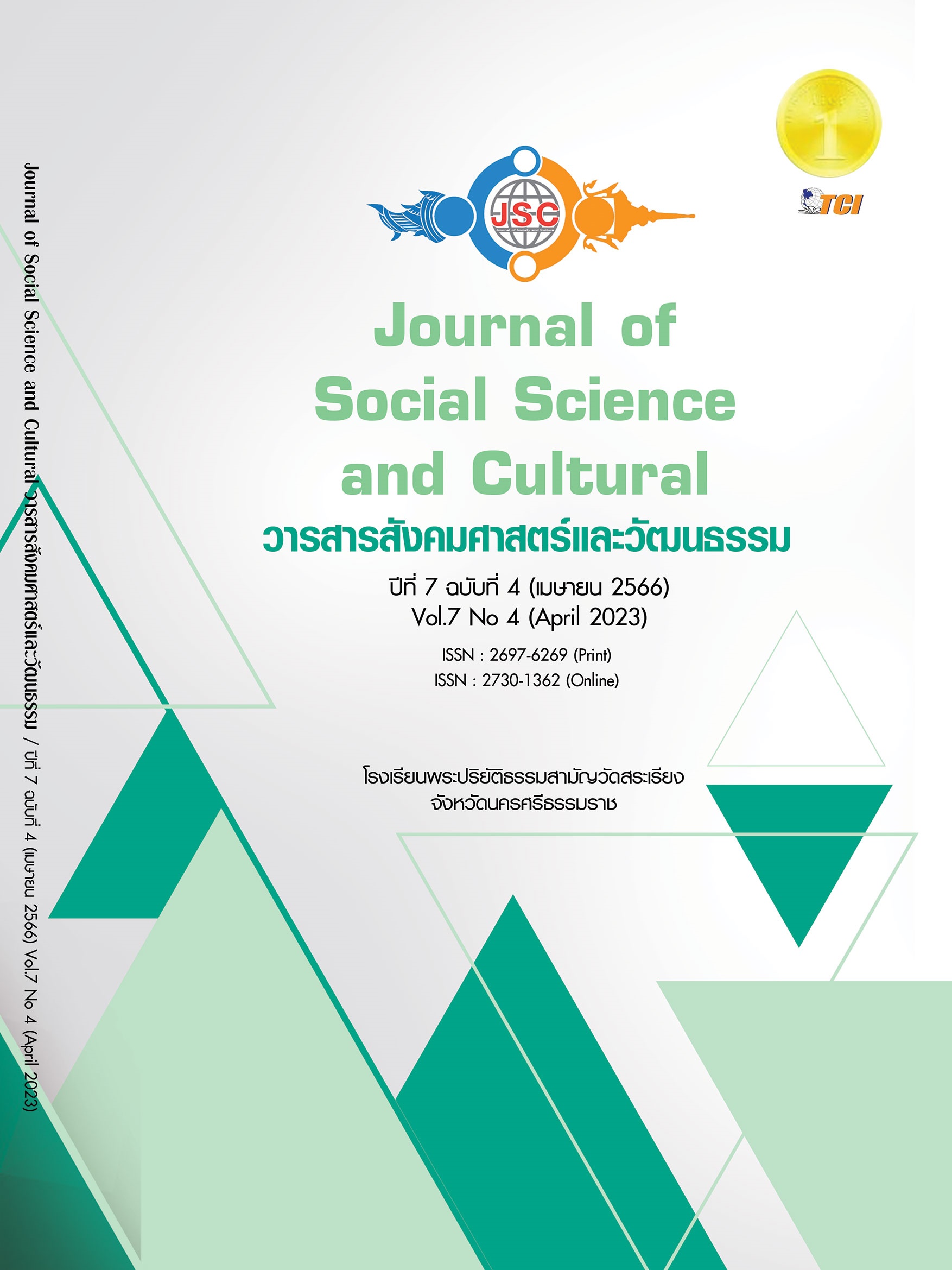FACTOR AFFECTING THE EFFECTIVENESS OF THE LOGISTICS MANAGEMENT SUCCESS OF COMMUNITY ENTERPRISE ENTREPRENEURS IN THE UPPER NORTHEASTERN PROVINCE
Main Article Content
Abstract
The objectives of this research article were to 1) To study the causal factors affecting the effectiveness of logistics management of community enterprise entrepreneurs in the upper northeastern provinces. 2) To examine the consistency of the causal relationship model of logistics management effectiveness of community enterprise entrepreneurs in the upper northeastern provinces. This research was a quantitative research methodology. The sample group consisted of 160 entrepreneurs of the upper northeastern provinces who were randomly sampled. The instrument used to collect data was a 5-level questionnaire. Data were analyzed by descriptive statistics. and structural equation model analysis. The findings are 1) Marketing Logistics Management Potential It has a positive influence on the efficiency of logistics management of enterprises in the upper northeastern provinces. 2) Potential of transport logistics management There was a positive influence on the effectiveness of logistics management of enterprises in the upper northeastern provinces. Community enterprises are therefore resilient and powerful enough to grow into independent business owners. associated government sector parties Additionally, In order to aid in production and sales promotion, innovation and technology expertise should also be present. In order for community enterprise organizations to propel themselves to become viable small and medium enterprises, they need to find market sources to support the products they produce. For simplicity and speed, community businesses should embrace technology to assist with information management. Community businesses should employ data management technology to store data quickly and conveniently and to support company continuity. This technology also aids in transportation, which increases efficiency.
Article Details
References
กรมส่งเสริมการค้าระหว่างประเทศกระทรวงพาณิชย์. (2564). “ระบบราง” โครงสร้างพื้นฐานสำคัญสู่การ “ลดต้นทุนโลจิสติกส์” ของประเทศไทย. เรียกใช้เมื่อ 25 ธันวาคม 2565 จาก https://www.nesdc.go.th/ewt_dl_link.php?nid=12898
ธานินทร์ ศิลป์จารุ. (2563). การวิจัยและวิเคราะห์ข้อมูลทางสถิติด้วย SPSS และ AMOS. กรุงเทพมหานคร: ห้างหุ้นส่วน สามัญบิสซิเนสอาร์แอนด์ดี.
ประสพชัย พสุนนท์. (2555). การวิจัยการตลาด. กรุงเทพมหานคร: บริษัท สำนักพิมพ์ท้อป จำกัด.
ปุญชรัสมิ์ บริรักษ์เจริญกิจ และคณะ. (2563). ความสัมพันธ์เชิงสาเหตุระหว่างมูลค่าลูกค้าและความภักดีเชิงพฤติกรรมของนักลงทุนในประเทศไทย. วารสารเศรษฐศาสตร์และบริหารธุรกิจ มหาวิทยาลัยทักษิณ, 12(1), 29-44.
Ahmed, H. et al. (2022). Assessing the impact of sustainable logistics service quality on relationship quality: Survey-based evidence in Egypt. Cleaner Logistics and Supply Chain, 4(2022), 100036.
Cai, J., et al. (2009). Improving supply chain performance management: A systematic approach to analyzing iterative KPI accomplishment. Decision Support Systems , 46(2), 512-521.
Cooper, R. (2017). Supply Chain Development for the Lean Enterprise: Interorganizational cost Management. London: Routledge.
D’Amico, G. et al. (2021). Smart and sustainable logistics of Port cities: A framework for comprehending enabling factors, domains and goals. Sustainable Cities and Society, 69(1), 102801.
Hu, L. T., & Bentler, P. M. (1999). Cutoff criteria for fit indexes in covariance structure analysis: Conventional criteria versus new alternative. Structural equation modeling, 6(1), 1-55.
Joreskog, K. D., and Sorbom, D. (1989). Lisrel 7: User’s Reference Guide. Chicago: Scientific Software International.
Kang, S. (2022). Exploring the contextual factors behind various phases in logistics sprawl: The case of Seoul Metropolitan Area. South Korea.J Journal of Transport Geograph, 105(2022), 103476.
Kline, R. B. . (2011). Principles and Practice of Structural Equation Modeling. (3rd Edition). New York: Guilford.
Mariuse K. et al. (2021). Modern technologies development in logistics centers: the case study of Poland. Transportation Research Procedia, 55(2021), 268–275.
Schumacker, R. et al. (2010). A Beginner’s Guide to Structural Equation Modeling. 3rd Edition. New Jersey: Lawrence Erlbaum.


